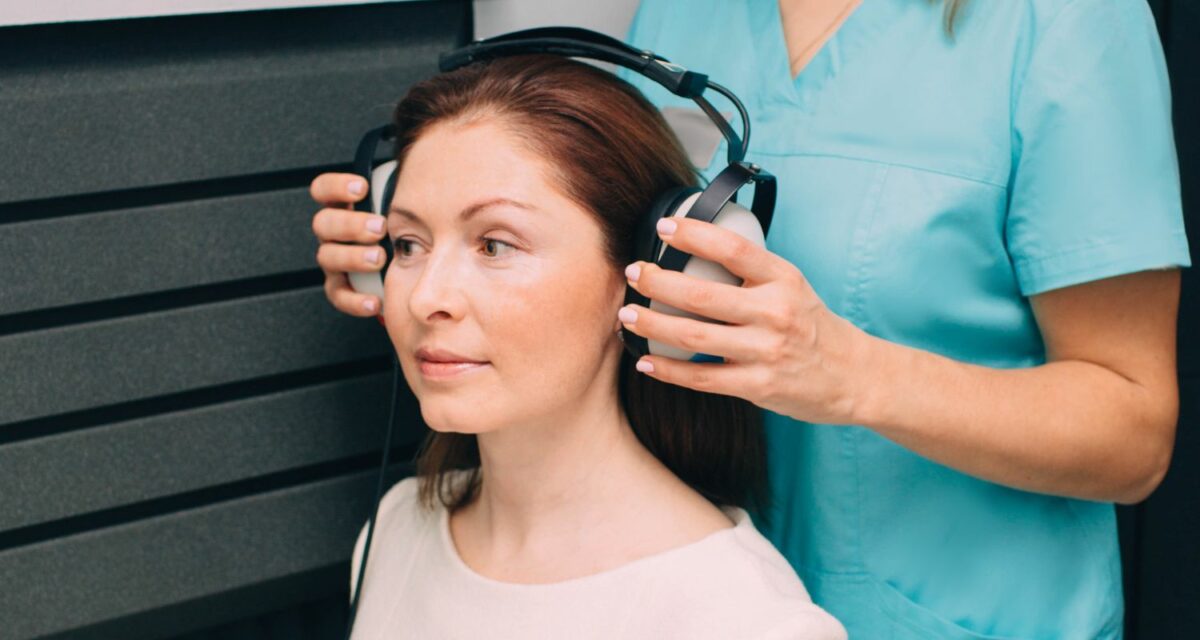It’s estimated that one in eight people in the US struggle with hearing loss in both ears, based on standard examinations. This means that the chances it could happen to you is rather high, especially as we age. One in three over the age of 65 live with hearing loss and this number jumps to around to half of all those 85 years and old. Still, hearing loss can happen at any age. It’s a good idea to stay on top of your hearing health with a hearing exam. The American Speech-Language-Hearing Association’s (ASHA) guidelines state that healthy adults ages 18-40 years old, who are not experiencing any noticeable hearing loss, should have their hearing tested every three to five years. If you are over the age of 60, are exposed to noise at work or for hobbies, then hearing tests should be annually. If you’ve never had a hearing exam before, it’s important to remember while essential for your health and quality of life, they are painless and can help you to find the best treatment to help you participate in life fully. Here is what to expect from a hearing exam and fitting.
An Entrance Interview
Before we can test your hearing we want to understand your health and hearing history as well as your hearing needs around your lifestyle. Before you start you will be asked to fill out a questionnaire covering your hearing concerns, medical history, family medical history, and aspects of your lifestyle. For instance, if you are a musician, or work in a noisy environment we can account for that later in the exam.
A Hearing Exam
Next step is the physical hearing exam and test. We will inspect your ear for any visual signs of hearing loss or damage using an otoscope. Next, we will administer a hearing test, which helps to establish a baseline for your hearing ability going forward and determines how your hearing aids will need to be programmed. It is often based on the highest and lowest sounds you can hear, in a soundproof booth, with headphones. There are other tests we conduct to identify your ability to hear in noise. Hearing tests are completely painless and take about 30 minutes.
Hearing Aid Consultation
If it is determined that you have hearing loss that warrants the use of hearing aids, the next step will be a discussion about the individual manner of your hearing loss. There are certain styles of hearing aids which are more fitting for various types of loss. For instance, those with more profound hearing loss will require a larger battery for more power and amplification. Similarly, those with dexterity issues due to arthritis may benefit from larger styles so they are easier to handle. Others with less advanced hearing loss may enjoy smaller hearing aids. Some of so small they are barely detectable as they sit deep in the ear canal. A hearing tests will provide a lot of insight into the nature and even causes of your hearing loss.
Which hearing aid is best for me?
There are so many types of hearing aids that it can feel overwhelming. That’s in part why we are here. Based on your hearing ability and lifestyle needs we can narrow you’re your options and cross reference it with various price points to find the best fit for you. In addition to styles there are many features which may enhance your day to day life such as Bluetooth connectivity, directional microphones for hearing speech in crowded rooms, wind suppression for those who love the outdoors and T-coil connectivity for attending public speaking events such as theaters, auditoriums, churches and public transit stations.
How long will it take to adjust to my new hearing aids?
Many people think that hearing aids work like glasses. When you first wear your new eye prescription it will correct your vision instantaneously. Hearing aids take time to adjust to, especially if you’ve been living with hearing loss for years. Your brain becomes unaccustomed to hearing certain sounds and when you hear them again with hearing aids for the first time, even the sound of your own voice may seem jarring. Start using them a few hours at a time at first in your home. As you get more used to them try wearing them out. By around two weeks you should build up to wearing them all day long.
A Life of Hearing
Once you get used to living with hearing aids, its common to wonder how you ever got by without them. To find out what you may be missing, schedule a hearing exam with us today!

